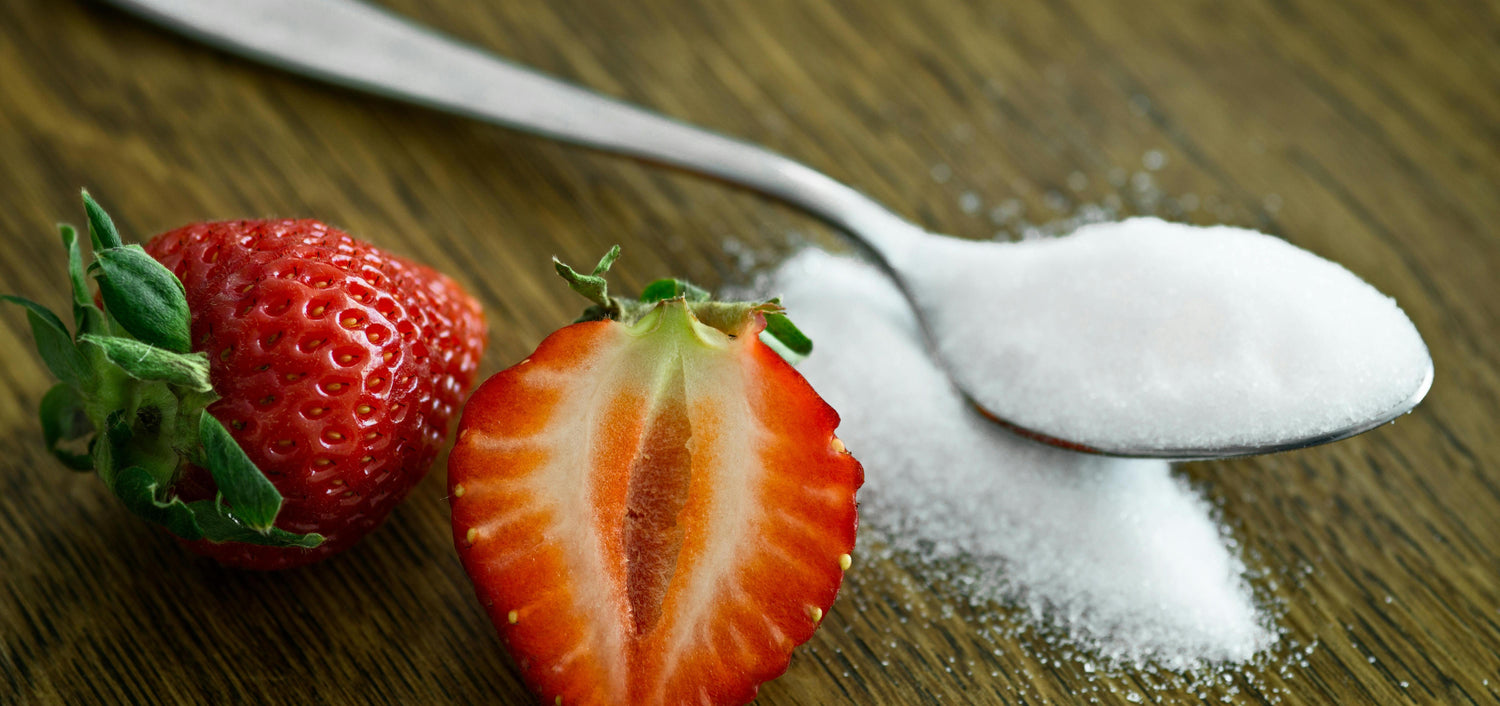
Understand Sugar to Unlock Healthy Sweetness in Your Diet
Sugar, the ingredient that makes desserts sing and coffee complete. But it's also been viewed as a public health enemy. So, what's the real story on sugar? In this blog, we'll delve into the world of sugars, exploring the good, the bad, and the not-so-bad.
Unpacking the Sweet Spectrum
Sugar provides readily available energy for our bodies. It also plays a role in brain function and can enhance the palatability of food. However, there's a difference between natural sugars and added sugars.
Natural sugars occur naturally in fruits, vegetables, and dairy products. They come packaged with a bonus of fiber, vitamins, and minerals, making them a part of a balanced diet. Added sugars are sugars and syrups incorporated into processed foods and drinks during manufacturing. They contribute to empty calories and can lead to blood sugar spikes and crashes. This, in turn, can leave you feeling tired and reaching for more sugar, creating an unhealthy cycle. Overconsumption of added sugars has also been linked to chronic health problems like type 2 diabetes, heart disease, and even certain cancers.
Here are the top sources of added sugars according to the Dietary Guidelines for Americans:
- Sugar-sweetened beverages: 24%
- Desserts & sweet snacks: 19%
- Coffee & tea: 11%
- Candy & sugars: 9%
- Sandwiches: 7%
- Breakfast cereals & bars: 7%
- Higher fat milk & yogurt: 4%
Sugar Lurks in Unexpected Places
While candy and soda are obvious culprits, added sugars can hide in seemingly healthy options like flavored yogurts, processed meats, and even some protein bars. The good news is you can become a sugar detective by:
- Reading food labels: Look for "added sugars" on the label. This tells you exactly how much extra sugar has been snuck in.
- Being mindful of hidden sugars: Scan the ingredients list. Sugars often disguise themselves under names like sucrose, high fructose corn syrup, or concentrated fruit juice.
How Much Sugar is Too Much? Setting Limits
The answer, like most things in nutrition, isn't a one-size-fits-all. However, some helpful guidelines can steer you in the right direction. The Dietary Guidelines for Americans recommends limiting added sugars to less than 10% of your daily calorie intake. For a 2000 calorie diet, this translates to about 50g of sugar.
Measuring How Sugar Affects the Body
The glycemic index (GI) is a tool that measures how quickly a food raises your blood sugar levels. Foods are ranked on a scale from 0 to 100, and can be categorized into three groups:
- High GI (70-100): These foods cause rapid blood sugar spikes. Examples include white bread, sugary drinks, and pastries. They provide a quick burst of energy but can also drop shortly afterwards, leading to fatigue and hunger cravings. Overconsumption of these has been linked to increased risk of diabetes and some cancers.
- Medium GI (56-69): These foods cause a moderate rise in blood sugar. Examples include some fruits, oatmeal, and brown rice.
- Low GI (0-55): These foods cause a gradual increase in blood sugar. Examples include non-starchy vegetables, nuts, and legumes.
However, it's important to note that the GI of a single ingredient doesn't tell the whole story. The combination of different nutrients can result in a different glycemic response. For example, adding protein and healthy fats in a meal can help regulate blood sugar response. Cooking seasonings like vinegar has also been found to reduce the glycemic response in our dishes.
With that said, enjoying high GI foods occasionally as part of a balanced diet is okay. However, it's important to focus on including more low and medium GI options.
Navigating the Sweet Aisle
Does this mean ditching sweetness altogether? Not necessarily! Here are some tips for navigating the grocery store and satisfying your sweet tooth:
- Sweet Swaps: Explore natural sweeteners like honey, maple syrup, or dates. While still containing sugar, they offer a more complex flavor profile and sometimes come with added nutrients.
- Embrace Whole Foods: Fill your diet with fruits, vegetables, and whole grains. These naturally sweet options satisfy cravings and provide essential nutrients.
Protein Bars for Balanced Sweetness
With protein bars, you can enjoy a delicious snack that keeps you energized without the dreaded sugar crash. Baseline Protein Bars boast a game-changing difference: only 2 grams of sugar, with none of it being added sugars! They are also packed with protein and fiber, keeping you feeling fuller for longer.
Conclusion
Sugar isn't inherently bad, but like most things in life, it's all about balance. By understanding different types of sugars, making informed choices, and enjoying sweet treats in moderation, you can create a healthy and delicious relationship with this versatile ingredient.
Sources
Großkopf, A., Simm, A. Carbohydrates in nutrition: friend or foe?. Z Gerontol Geriat 53, 290–294 (2020). https://doi.org/10.1007/s00391-020-01726-1
Hu, J., La Vecchia, C., Augustin, L., Negri, E., De Groh, M., Morrison, H., & Mery, L. (2013). Glycemic index, glycemic load and cancer risk. Annals of Oncology, 24(1), 245–251. https://doi.org/10.1093/annonc/mds235
Kaartinen NE, Similä ME, Kanerva N, Valsta LM, Harald K, Männistö S. Naturally occurring and added sugar in relation to macronutrient intake and food consumption: results from a population-based study in adults. Journal of Nutritional Science. 2017;6:e7. doi:10.1017/jns.2017.3
Murillo S, Mallol A, Adot A, Juárez F, Coll A, Gastaldo I, Roura E. Culinary strategies to manage glycemic response in people with type 2 diabetes: A narrative review. Front Nutr. 2022 Nov 10;9:1025993. doi: 10.3389/fnut.2022.1025993. PMID: 36438742; PMCID: PMC9684673.
U.S. Department of Agriculture and U.S. Department of Health and Human Services: Dietary Guidelines for Americans, 2020-2025. 9th Edition. December 2020